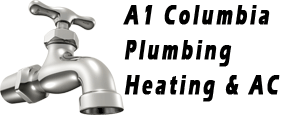Furnaces. Who really knows about ’em? Who really WANTS to know about ’em? Well, we do for one.
Here are 5 things you didn’t know about your furnace. A little light reading if you will:
Almost Every Home Has a Furnace
According to the U.S. Department of Energy, the majority of homes in the United States rely on electric, gas or oil-fired furnaces for heat. These furnaces are quite popular with most homeowners thanks to their relative affordability, versatility and performance. Gas-fired furnaces are especially common, given that 57 percent of U.S. homes rely on natural gas as a heating fuel. A little brain snack to start out with here…
There are Three Main Types of Furnaces
A furnace is not just a furnace. In most cases, it’s either one of three types of furnaces:
- Single-stage furnace – Named because it offers only one stage of operation, it’s the simplest yet also noisiest type of furnace available. Thanks to its simplicity, a single-stage furnace is also the cheapest to purchase.
- Two-stage furnace – Unlike a single-stage furnace, a two-stage furnace offers a half-speed operational stage along with the standard full-speed stage. This makes it easier to regulate temperatures. The reduced fan speed also makes this option quieter than its single-stage counterpart.
- Modulating furnace – Using advanced HVAC technologies like variable-speed blowers and burners, modulating furnaces are able to continuously control indoor temperatures.
Size Matters Buddy
The two most important factors to keep in mind before purchasing a new furnace or replacing your old one are comfort and fit. Your furnace should be just the right size, not too big and not too small. If your unit is too small, it may not be able to keep up with the comfort needs of your family, and will be inadequate. Make sure your furnace meets the needs of your home’s square footage and a number of other factors that come into play when narrowing down on the right furnace.
Your Furnace Has an End Date (We All Do)
Nothing lasts forever, even when it comes to your heating and cooling equipment. At some point, you’ll have to give your old unit a rest and replace it with a brand-new furnace. Fortunately, most furnaces are built to last for decades on end.
With the proper amount of care and regularly scheduled maintenance, most furnaces are capable of offering up to 15 years of trouble-free service. Furnaces that are exceptionally well taken care of can last for 20 years and there are even a few furnaces in existence that continue to work after 30 years or more.
Nevertheless, you’ll want to consider replacing your aging furnace with a newer and more energy-efficient model, especially if your current furnace suffers from age-related problems (such as increasingly frequent breakdowns, heavy signs of corrosion, etc) or consumes an extraordinarily large amount of fuel in order to operate properly. But read on…
BUT…Most Furnaces Have More Than One Life to Live
Want to know another amazing thing about your furnace? When it reaches the end of its lifecycle, the majority of its components can be recycled into other useful parts. For instance, some components can be refurbished for use in other furnaces while other bits and pieces, including the metal housing, can be broken down and reformulated into new parts. When it comes to furnaces, there’s really no such thing as “waste.”
So there you have it, 5 things you didn’t know about furnaces…until now. Stay Warm Columbia, and call us if for some reason you don’t!
